Status epilepticus (SE) refers to prolonged seizures lasting 30 minutes or more. Of all SE cases, 30% have their seizures persist even after treatment with two medications and this is called Refractory Status Epilepticus (RSE). Causes in RSE are usually identifiable.
Where causes are ruled out this is referred to as New Onset Refractory Status Epilepticus (NORSE). This is a rare cryptogenic presentation in which RSE develops suddenly without any obvious reason and continues even when treated with anti-seizure medications (ASMs).
NORSE more usually affects young adults but can occur in any adult age range. NORSE is estimated to account for 10 to 20% of cases of RSE. NORSE is associated with a high risk of complications including increased morbidity and mortality. NORSE is not a formal diagnosis but describes a subset of SE and RSE cases.
Cause
Causes of NORSE are unclear as there is no obvious trauma or trigger. It has been suggested that there may be an immune or inflammation basis, but usually no cause is identified.
Symptoms
Usually the onset of NORSE is preceded by flu like illness, in two thirds of cases. Between a few days and 2 weeks seizures may begin which can be focal or generalised in origin, which then increase in frequency until they become continuous and prolonged (SE). During this phase the person is often in an induced coma in ICU to control the seizure activity.
Diagnosis
Diagnosis is clinical based on history and physical exam and a series of exclusionary test to rule out other causes. EEG and prolonged EEG (telemetry) can pick up seizures over time. Many of the standard tests such as CT brain scans and MRI can be helpful to rule out structural causes for seizures such as stroke. Blood tests and lumbar puncture can rule out infectious and immune mechanisms.
Treatment
There is no standard treatment for NORSE as of yet, so treatment focuses on managing the seizures usually with IV benzodiazepines and then with ASMs. Treatment may include trying to control seizures with further IV ASM’s or, when required, anaesthesia to induce coma. Although research is still confined to a small number of cases, further treatments may attempt to reduce potential inflammation with IV steroids, and other immunological based treatments may also be considered. Further treatment options may include the ketogenic diet (KD).
Outcome
Once seizures are controlled the person may regain awareness and no longer need intensive care. Of the many cases who survive, at least 30% will have enduring impacts such as neurological deficits, epilepsy, and cognitive impairment. A significant minority of cases recover well and regain function and skills. About one fifth to one third of cases can be fatal.
- Further information on Anti-Seizure Medications, the Ketogenic Diet and epilepsy surgery can be found by visiting the 'Treatment' section of our website.
- Further information on diagnosis can be found by visiting the 'Diagnosis' section of our website.
- Other useful resources surrounding epilepsy can be found throughout our 'Epilepsy Information' section.
- If you need any information or support regarding epilepsy, contact your local Community Resource Officer - you can find their details by visiting the 'Our Local Service' section of our website.
